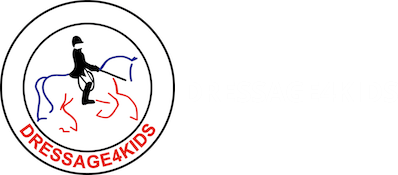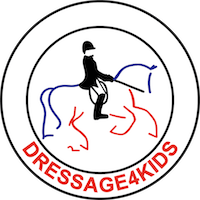THE HANDLER CLASS
Qualifying Requirements
No qualifying requirements for 2026.
Purpose
The overall purpose of the in-hand discipline is to present the horse in a way that makes the horse look and act in the best possible way both standing still and moving.
The horse is shown in a bridle with single reins. The handler must behave discreetly in order to let the attention be concentrated on the horse, though it is the handler that is being assessed.
General Information
The horse is presented to the judges on the triangle. Each side of the triangle is 30m in length.
Each participant is allowed the assistance of a ‘whip handler’ using a lunge whip. The function of the whip handler is to discreetly keep the horse going forward at all times while at the same time not upsetting the rhythm and balance of the horse.
The whip handler should follow at a safe distance (out of the reach of the hind legs), helping the horse as needed, and quietly following (not chasing) the horse when support is not needed. The pace of the whip handler, horse, and lead handler should look harmonious.
Competitors may carry a training whip that is held in the left hand instead of an assistant whip handler if preferred.
Please be aware that unnecessary punishment may lead to disqualification in this discipline.
Attire
For presenting a horse in hand, participants may wear slacks (white or off-white) with long or short sleeved white collared shirt only. Riding helmets and gloves must be worn for this discipline.
How the Handler Class is Conducted
Phase 1. At the signal of the judges the competitor enters the arena at A in walk, heading in a straight line towards the judges at B. The walk should be purposeful, balanced and at a pace that suits the horse with a regular four beat rhythm. The judges will note the position of the competitor in relation to the horse, the use of the rein aids and the free left hand, as well as the competitor’s ability to communicate subtly with the horse and to interpret the horse’s reactions and respond appropriately to them. It should appear easy, effortless and smooth.
Phase 2. On reaching the judges at B, the competitor presents the horse in front of the judges at halt in an open stance with the near (left) side of the horse nearest to the judges. This means the near forelimb is positioned a little in front of the off forelimb. Also the near hind leg should be positioned behind the off hind leg. The horse must stand balanced on all four legs, holding the head and neck naturally straight in front.
In front of the judges the handler steps to the front of the horse at approximately one arm’s length. The reins are held, one in each hand at a suitable distance (approx. 30 to 60 cm) from the bridle ring.
When positioned, the competitor looks towards the judges and gives an oral presentation in a clear, audible voice stating his/her name, and the age and pedigree of the horse (sire, dam and dam’s sire).
The oral presentation is to be done in the following format:
“I am (name), I present a (age) years old (brand) (sex) by (sire) out of (dam) by (dam’s sire!” or
“I am (name), I present a (age) year old (breed)!”
The positioning of the horse should be achieved as smoothly and swiftly as possible. The judges will note the correct positioning of the horse and competitor, the use of the rein aids, the ability to communicate subtly with the horse and to present the horse’s details clearly.
Phase 3. At the signal of the judges, the competitor walks the horse in a straight line away from the judges towards and around C returning in a straight line to B. The judges will note the rhythm and tempo of the walk, the straightness of the line and the smoothness and balance on the turn. The judge will also note the position of the competitor, the quietness of his/her free hand, his/her ability to utilize the rein aids, and his/her ability to communicate with the horse.
Phase 4. On reaching B the competitor turns right and trots towards D, turning right again and displaying extended trot towards A and turning right again back to the judges at B. On reaching B the competitor will transition to walk and proceed towards and around E, returning to present the horse to the judges at B. The judges will be noting the position of the competitor, the smoothness of the transitions from walk to trot and trot to walk, as well as the straightness, tempo, rhythm and balance of the trot in the straight line and on the turns. The competitor must be careful to regulate the tempo approaching and through the turns and to achieve controlled extension of the trot between D and A. The judges will note the use of the rein aids and communication with and reaction to the horse.
Phase 5. Presentation in halt at B. The halt presentation is in the open stance with the off (right) side of the horse nearest to the judges. The competitor should bid thank you to the judges. At the signal of the judges the competitor leaves the arena in a walk towards A in a relaxed manner. The judges will note the positioning of the competitor and the horse, the use of the rein aids, subtle communication with the horse and the straightness and rhythm of the exit walk.
Overall Impression:
The judges will score the overall presentation: Was it a balanced efficient performance? How did the competitor handle situations as they arose? Was the competitor in control at all times?
Throughout the presentation the judges will be looking for the correct way of holding the reins, the correct and quiet presentation in the stance on both occasions, and the discreet handling of the horse throughout the presentation while maintaining the desired gait, and the rhythm, balance and tempo of the gait.
The judges want the handler to present the horse in a manner that shows the horse at its best. In the walk as well as in the trot, the horse should be given the opportunity to show its movements as freely as possible. On the turns the handler may reduce speed without the horse losing rhythm. In the standing position the horse should look its best. The judges want a harmonious total impression of the presentation. The walk of the horse must be calm, natural and rhythmic, clearly exhibiting four-time beat and as free as possible. In trot the horse must show a clear two-time beat movement and show extension as soon as possible after the turn at D.
In all movements the horse should carry its head and neck naturally while being led in a straight line. All turns are made to the right, and are made as short as possible. During the turns the left hand is kept level with the horse’s left eye at a suitable distance from it.
Handler’s # Horse’s # Horse’s Name Breed
Link to score sheet:

